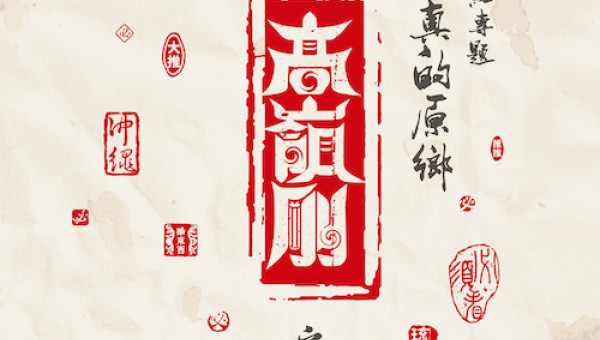PRISM-LIKE REALITY AND MEMORY: HISTORY AND THE EVERYDAY CAPTURED ON SMALL-GAUGE FILMS
Film History before the Screens
‘Cinema’ is generally discussed from the perspective of the commercial screening system based on 35mm as the standard format. As for the film industry, directors, stars, and creative teams ‘behind the screens’, an aesthetic view remains a prerequisite for consolidating the artistic status of cinema won in the early 20th century. Our imagination of the term ‘cinema’ has almost been dominated by such a vision, which even oriented film studies for over half a century. The evolution of film screening from the 35mm format to digital ones amounts to a history constructed behind the screens. However, is there not a history related to the audience ‘before the screens’?
As early as the invention of cinema, manufacturers already successively developed various ‘small-gauge films’ with low technical thresholds and formats smaller than 35mm, such as 9.5mm developed in 1922 and 8mm launched in 1932; such products were intended for bringing cinema into the private sphere and making ‘filmmaking’ and ‘film viewing’ a common leisure culture. After small-gauge films were introduced into Taiwan, social classes with ample spending power came to engage in this emerging activity. Shot casually or as exchanges among fellows, these films were all meant to record the good times as shared memories among relatives and friends.
Despite being excluded from the film history, these home movies constitute a pure record of intersections of lives and times and also reflect traces in History, involving colonisation, displacement, modernisation, and the social development in Taiwan.
Technical Development of Small-gauge Film
A half year after the Pathé-Baby 9.5mm film projector was launched in 1922, the Pathé-Baby 9.5mm camera was introduced in 1923, formally inviting the public to view and also make films at home, bringing the audience from collectivity of cinemas as public space to emotional experience in the private sphere. With the camera for home movies being a bit larger than an adult’s palm, one could easily record daily moments, travel experiences, and important family events. With a friendly and cute name, it defeated the Ciné-Kodak 16mm camera manufactured by the Eastman Kodak Company the same year and became the first choice in terms of contemporary cinema at home.
Taiwan was not excluded from the global wave of ‘cinéma chez soi / cinema at home’. After the introduction of Pathé-Baby products into the island by the Japanese agency Banno Shoten in 1925, ideas about watching and making films at home were gradually instilled around 1928. Moreover, amateurs elevated the level of these DIY cinema events to one of technical elaboration. They established cinema clubs and shared technical know-how and aesthetic tastes through screenings, exchanges, and collective shooting outside.
Despite the slightly inferior portability of the 16mm camera and projector launched by Kodak in comparison with those by Pathé-Baby, they occupied a niche in education and propaganda for their favourable image quality and aspect ratio, making them a main broadcasting channel for films on related topics in Taiwan under Japanese colonial rule. In 1932, the 8mm format developed by Kodak affected Pathé-Baby’s status as the leader of amateur cinema for over a decade. This time, Taiwan caught up timely: traces of advertisement for Kodak’s 8mm were already seen in the Taiwan Daily News (Taiwan nichi nichi shinpo) in 1932. From 9.5mm to 8mm, people on the island thus continued to take pleasure in the ‘leisure-cinema’ simultaneously with amateurs around the globe.
Thanks to small-gauge films, the experience of use in cinema was actually further diversified through DIY screening and filmmaking in the name of either home or amateur cinema, as various practices spread and flourished beyond theatres, covering domestic use, peer exchange, education of moving images, and policy advocacy. In a context where feature films in Taiwan under Japanese rule were all lost, this allows us to revisit new facets of Taiwan’s film history that are yet to be re-explored.
Prism-like Reality and Memory
After my research, collection, and (re-)discovery jointly with the TIDF team for over two years, we selected small-gauge films from a specific period: from the 1920s under Japanese rule to the 1970s. These footages comprise ‘Taiwan Spectrum | Untitled Reel: Amateur, Small-gauge Films and Others,’ which unfolds through the aspects of technology, history, memory, and research, directing one’s attention from behind to before the scenes, bringing a different perspective on documentary films, and expanding aspects of the history of Taiwanese cinema that are more extensive and authentic.
However, given the depth and complexity of the history before the scenes, the programme takes forms that differ from conventional film screening. The screening sessions which demonstrate precious historical pictures of Taiwan are accompanied by oral presentations, lecture performances, live cinema, archives-based remakes, etc. Additionally, the audience can see and touch small-gauge film devices in the exhibition around the screening and event venues.
The documents, archives, and films in ‘Brief History of 9.5mm Films in Taiwan,’ the introduction to the programme, incarnate the instillation of ideas about cinema at home, the development of a culture of amateur cinema during the Japanese Rule in Taiwan, and a research- and remake-based contemporary perception of Pathé-Baby that took the world by storm a century ago. ‘Ting Ray-yü’s Home Movie (1935-1943)’ is among the rare surviving 8mm home movies from Japanese colonial rule. Doctor Ting Ray-yü devotedly documented his cross-country displacement with his family on film. In allowing the audience to perceive the challenges for Taiwanese people with multiple identities to face war as their normal, the home movies precisely act as a crucial vehicle against the fading of memories. ‘Small-gauge Films in 1930s Taiwan’ features travelogues made by Japanese people, offering a glimpse at modern facilities and leisure activities on the island of Taiwan and an approach to the influence of colonisation and modernity from the angle of the introduction of golf and cinema; one can perceive how the colonial administration built a network of production, distribution, and distribution for film education by appropriating small-gauge film as a communication tool for social, formal education, and policy advocacy. Additionally, thanks to the films in ‘Hsu Tsang-tse’s Home Movie (1960-1970)’, the audience can glance over famous photographer Hsu Tsang-tse’s family life, while Taiwan’s natural landscape and cultural aspects after World War II are represented through the dear memories of childhood and trips preserved for the family through his lens. In the forms of lecture performance and film, ‘Lecture Performance: Re-discovery of Deng Nan-guang’s 8mm Films’ and This Is Not a Film by Deng Nan-guang lead the audience to ‘reverse’ interpretation of a documentation comprising footages previously categorised as family movies by Deng.
Furthermore, regarding the amateur culture derived from small-gauge films, without an amateur’s presentation in person, a crucial role will be missing from the cultural landscape based on small-gauge footage. Therefore, film collector Mr. Chang Ling-wen is invited for a live demonstration and operation based on his collection, comprising rare footage and projectors of the early years of Taiwan; he will also share the formation of an amateur with the audience. Last, ‘Amateur Cinema: An Afternoon with 8mm Movies’ co-organised by the TIDF and the Film Collectors Museum invites the audience to immerse in emotional memories carried by private footage.
This is the history to be revealed through ‘Taiwan Spectrum | Untitled Reel’: imaged documentation that revisits one’s emotional memories is called ‘cinema’, too.
Translated by Sylvie LIN


